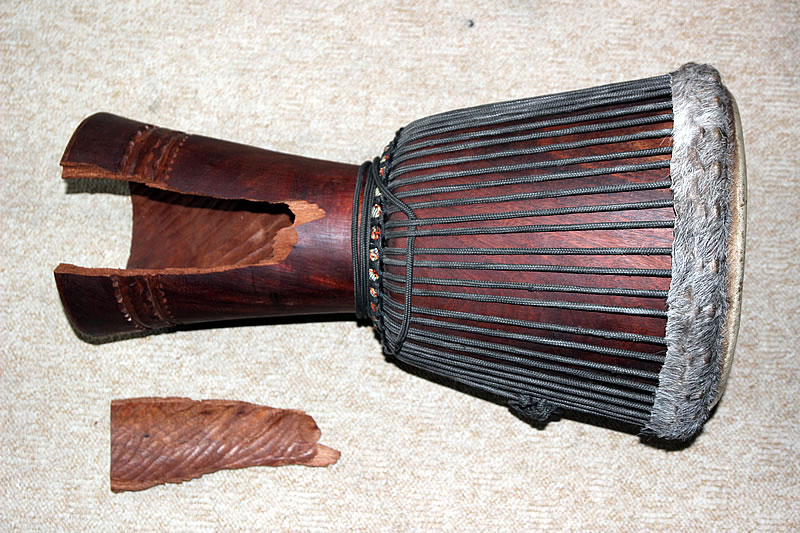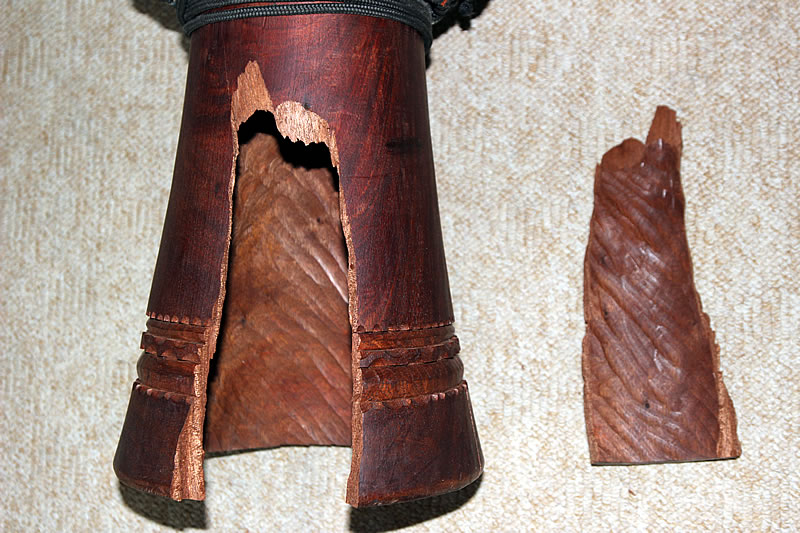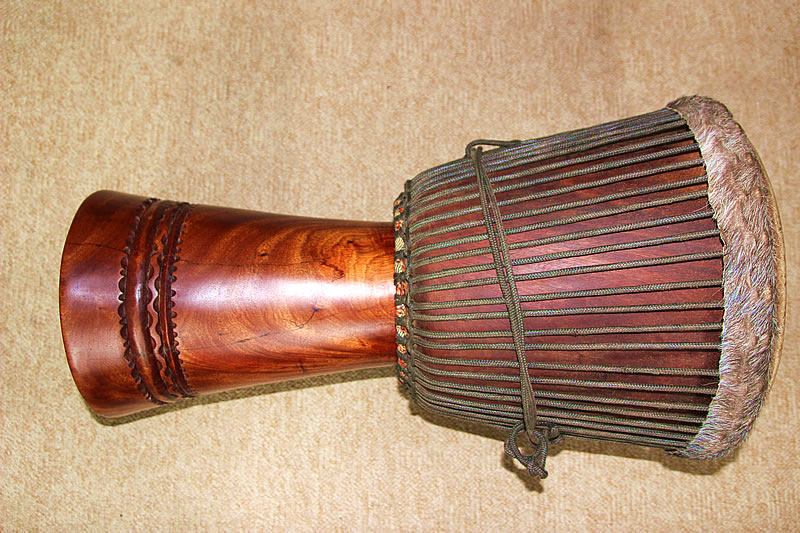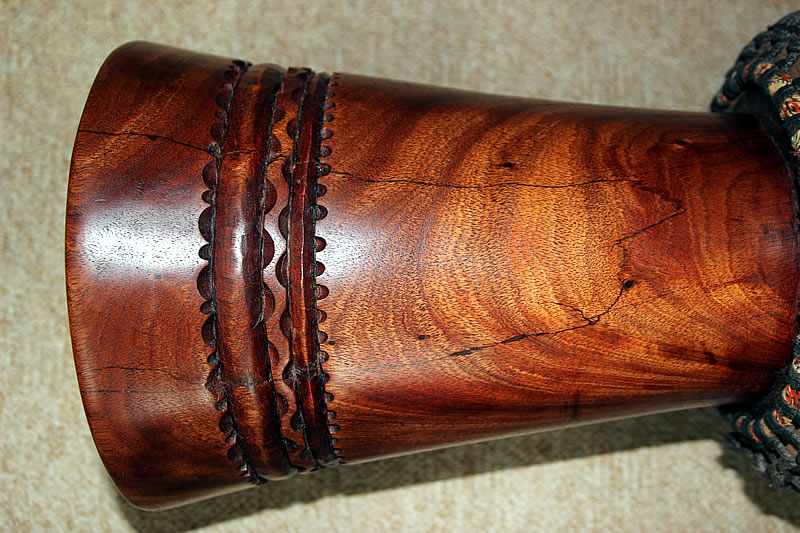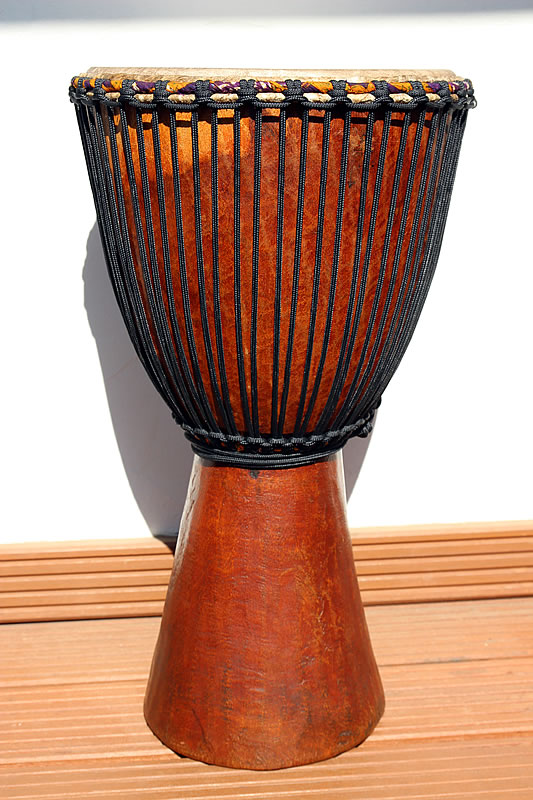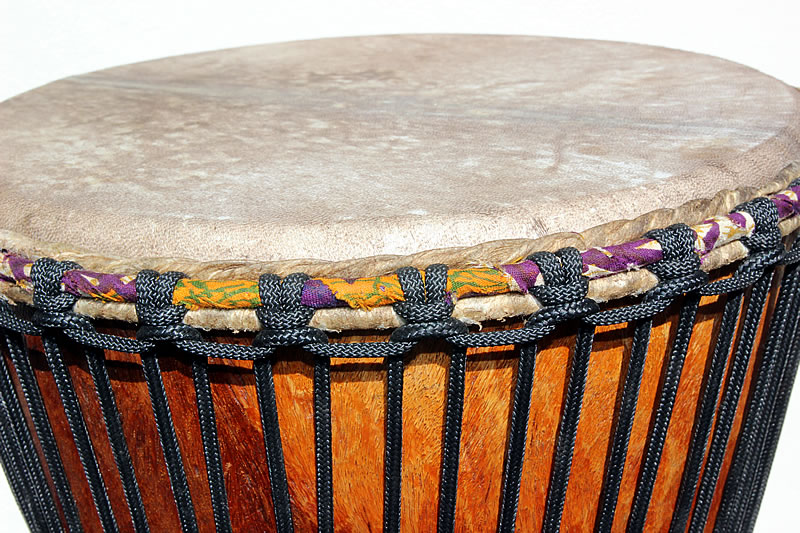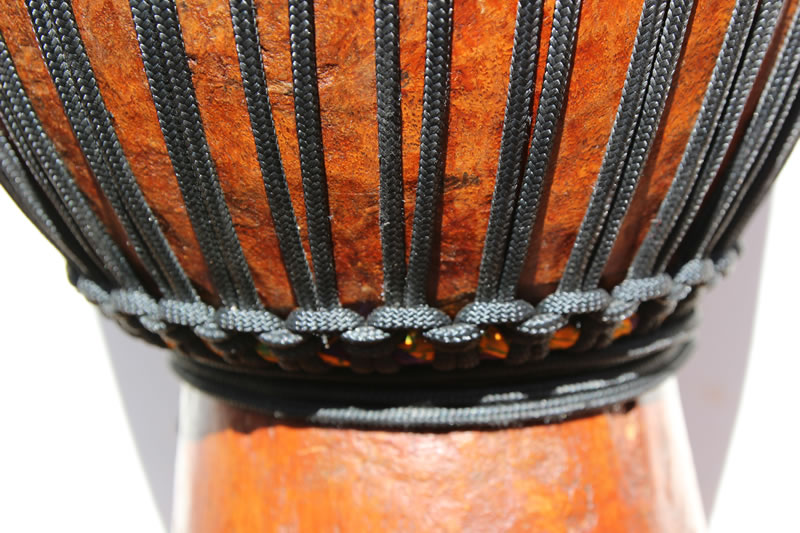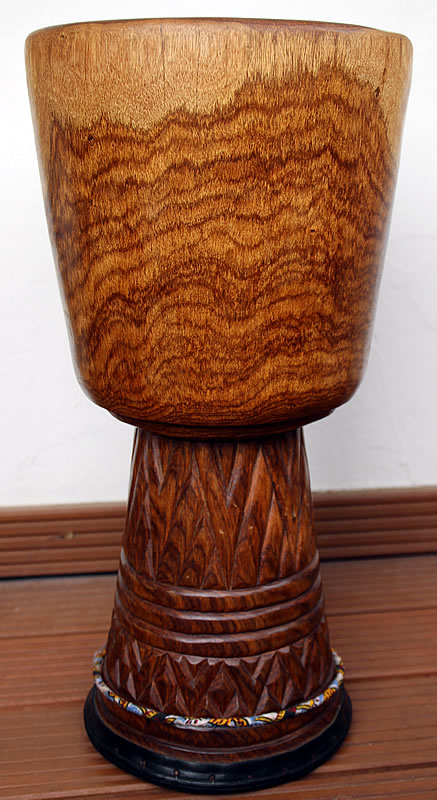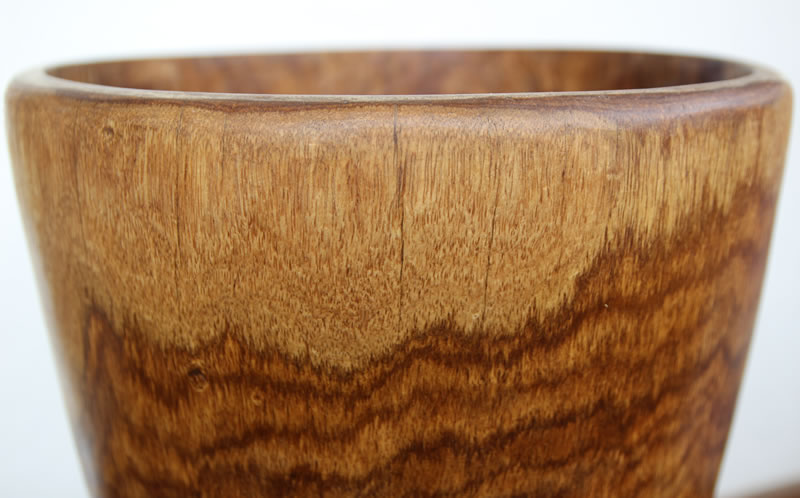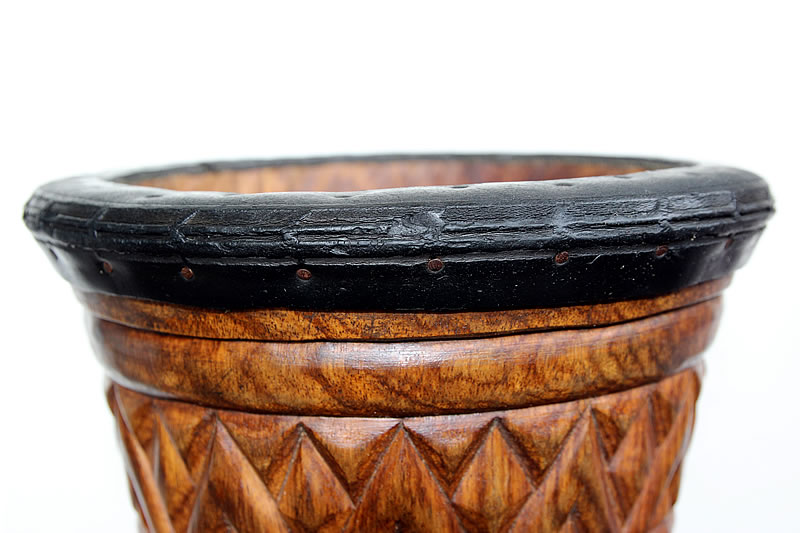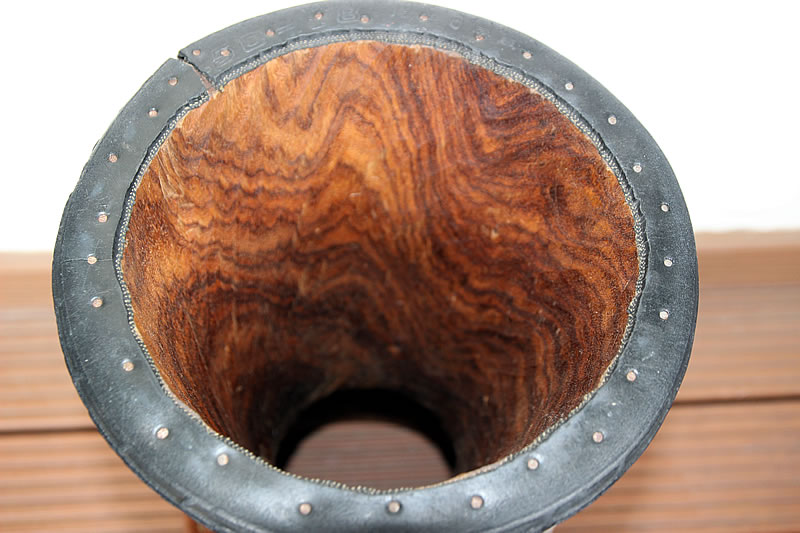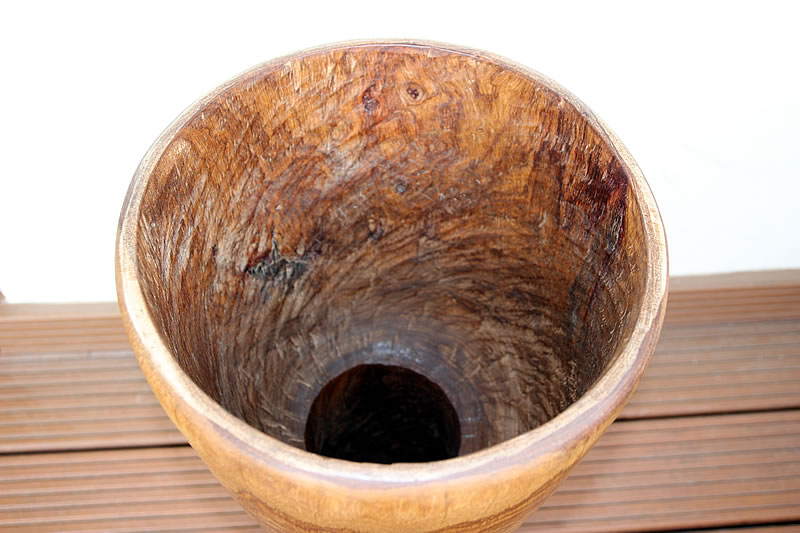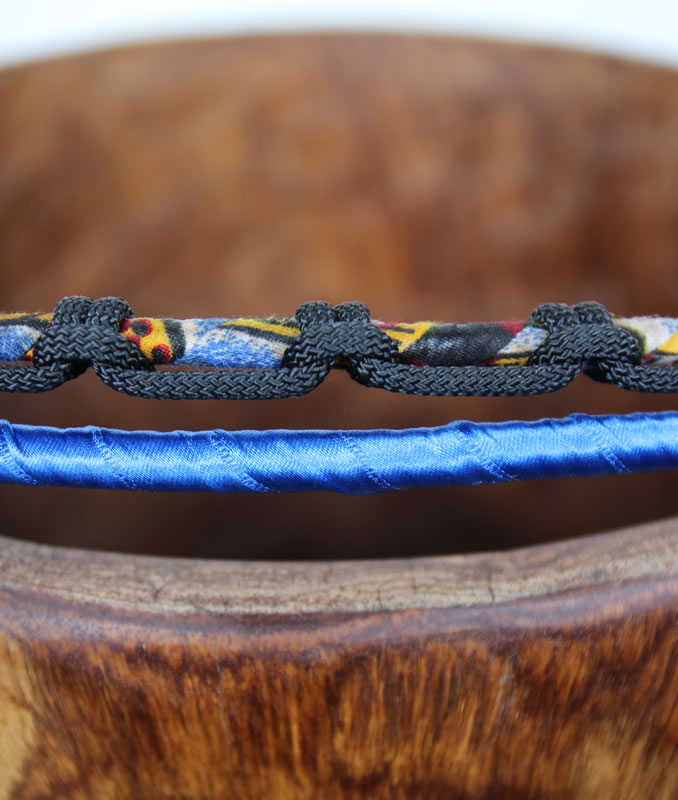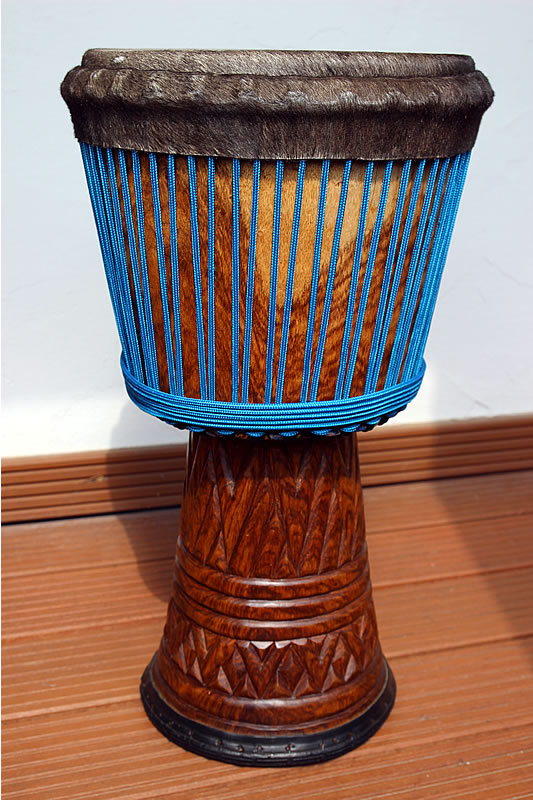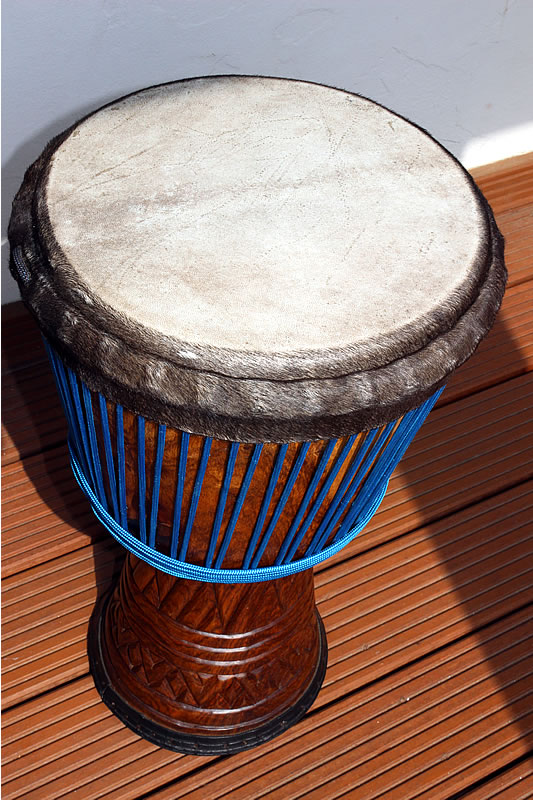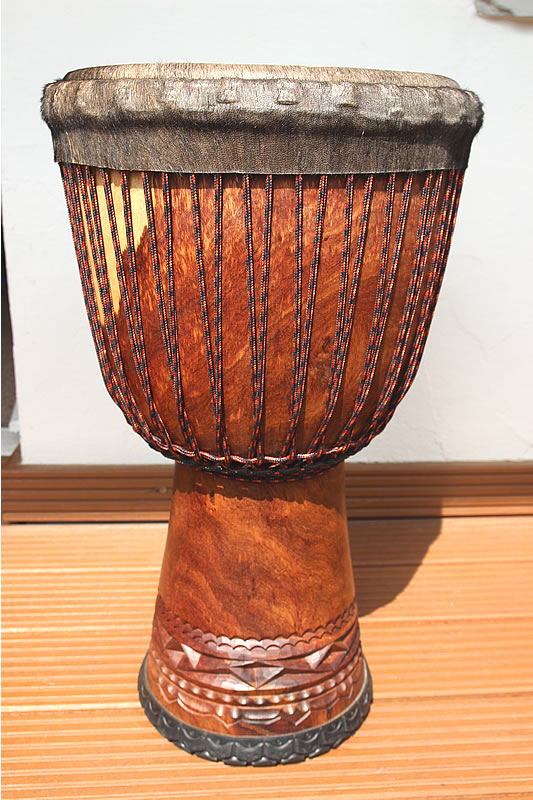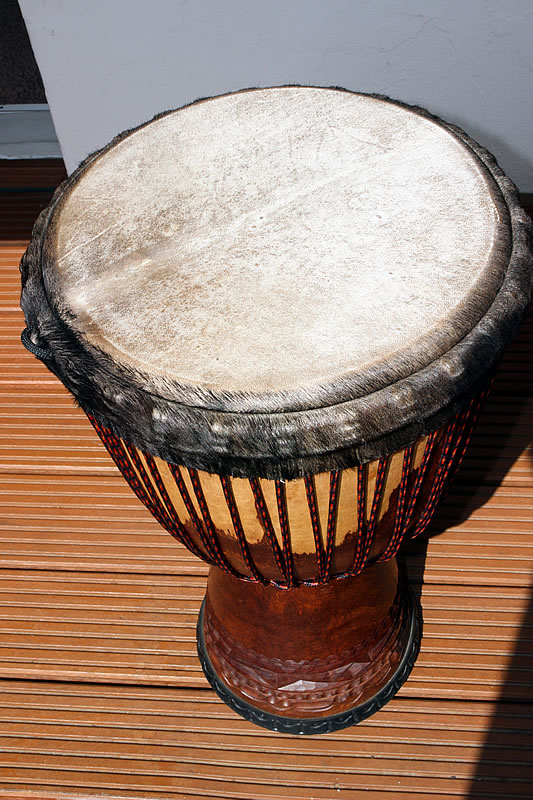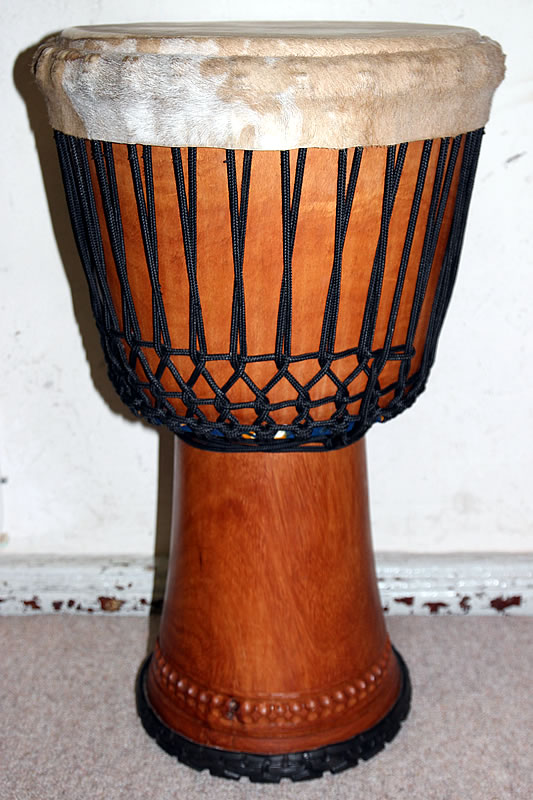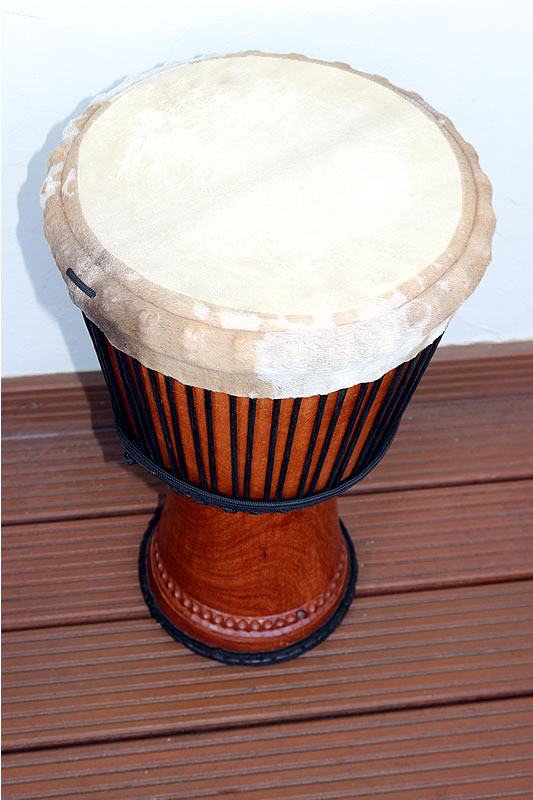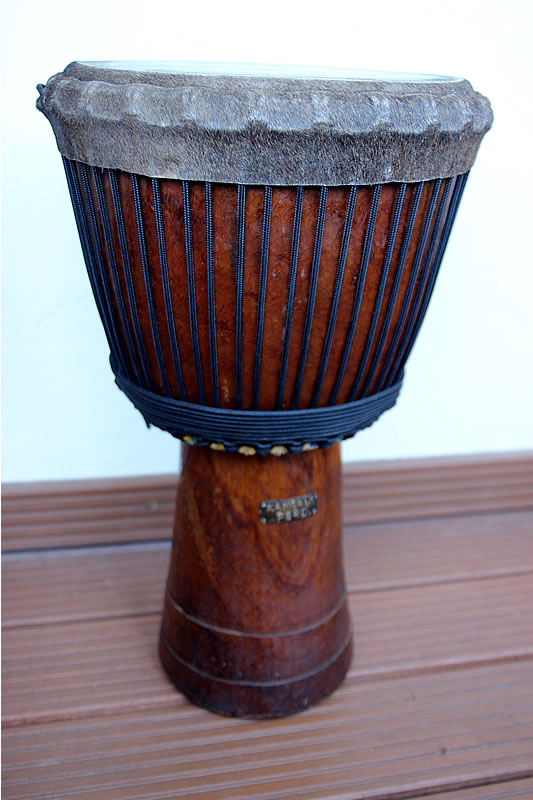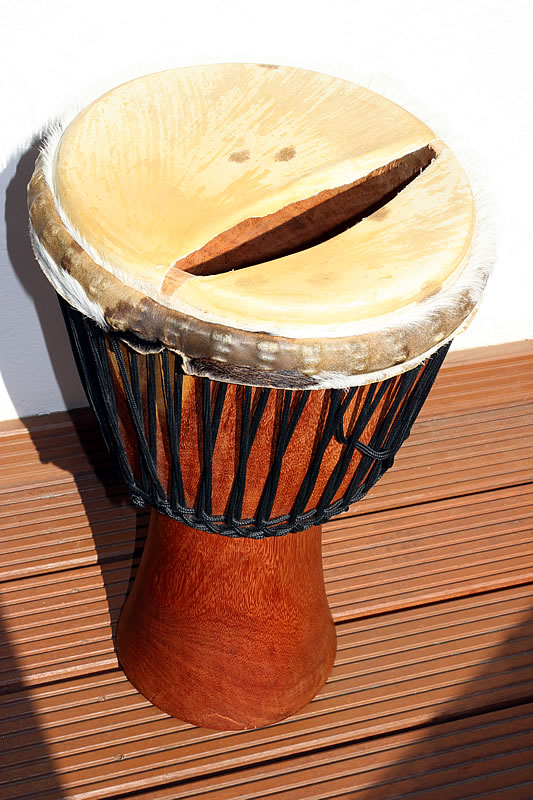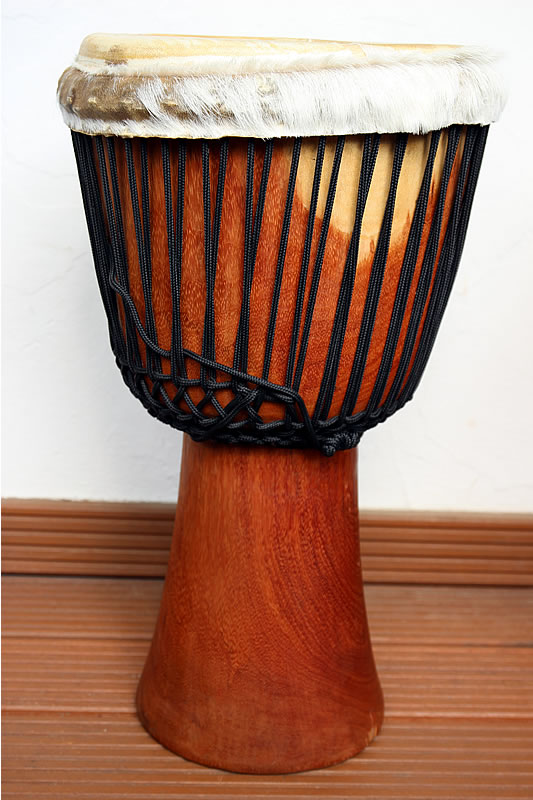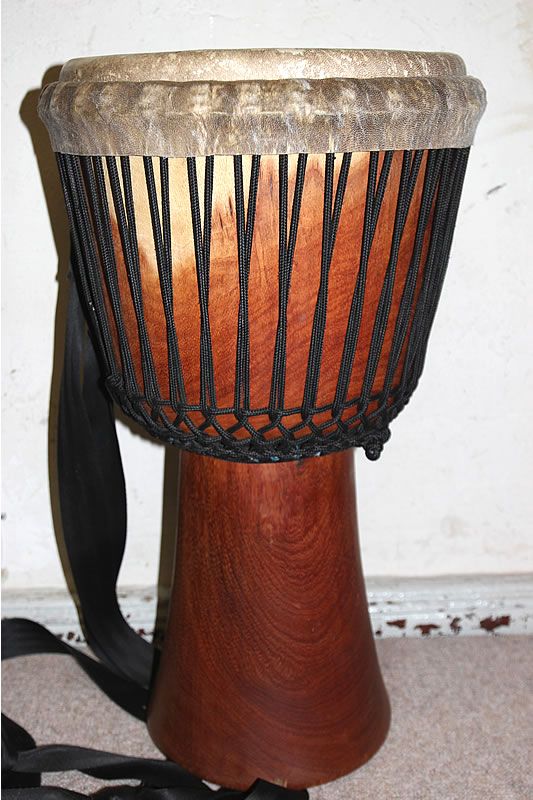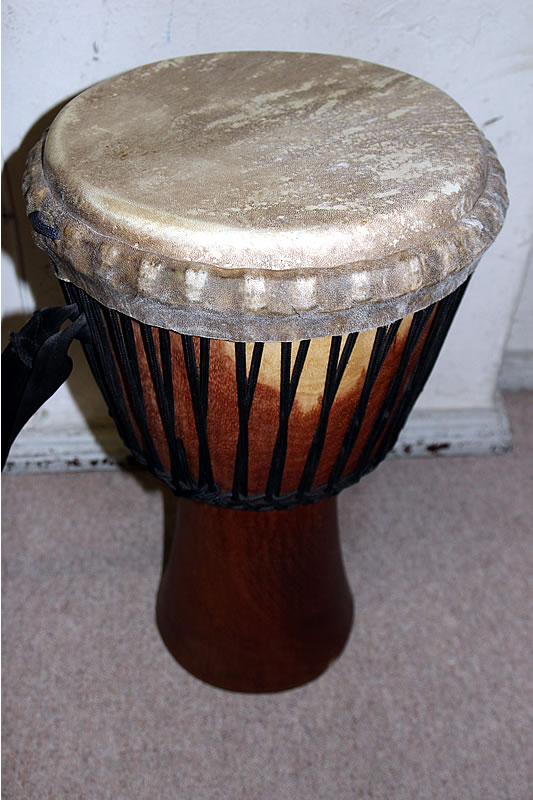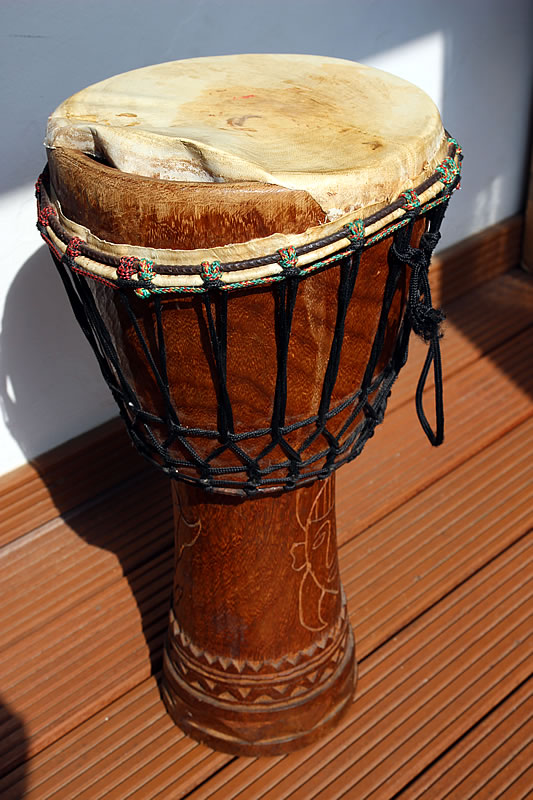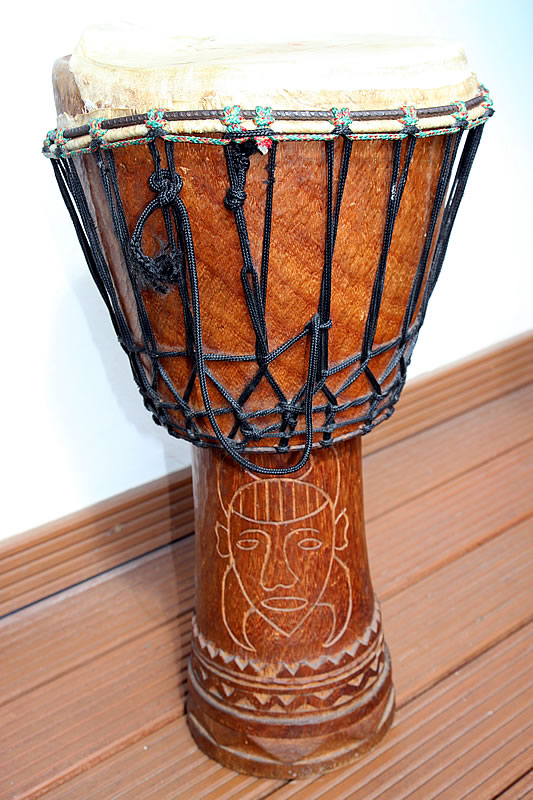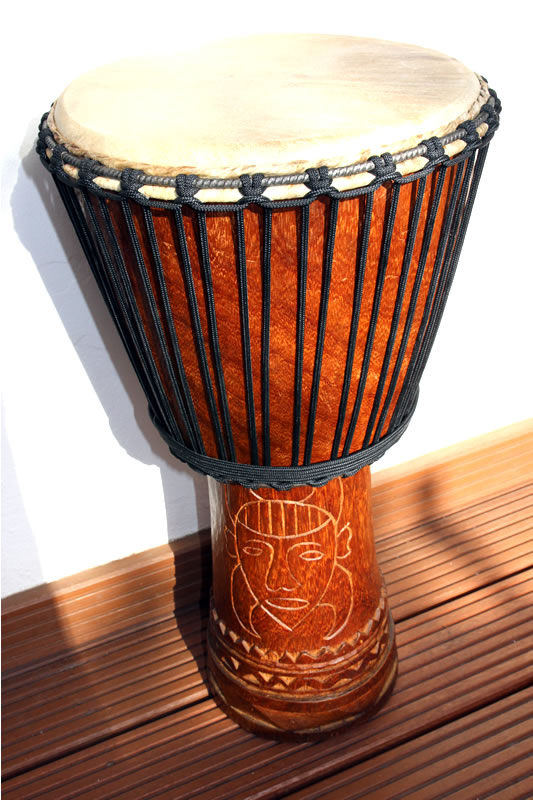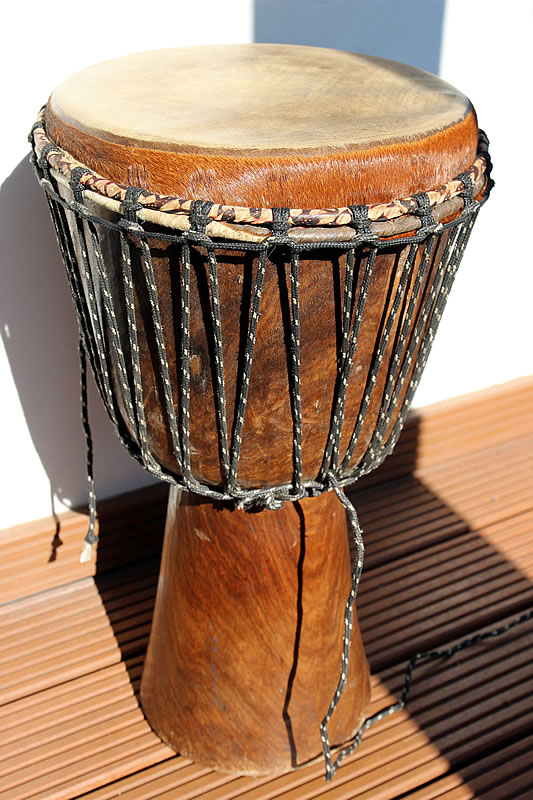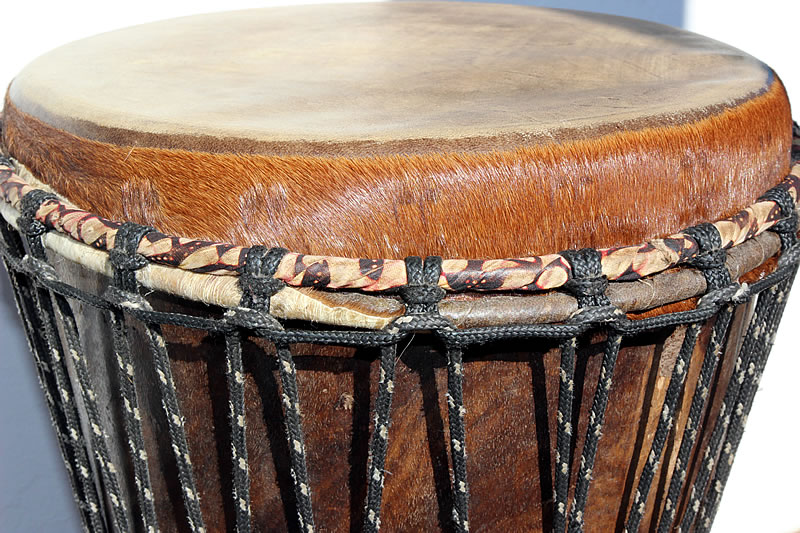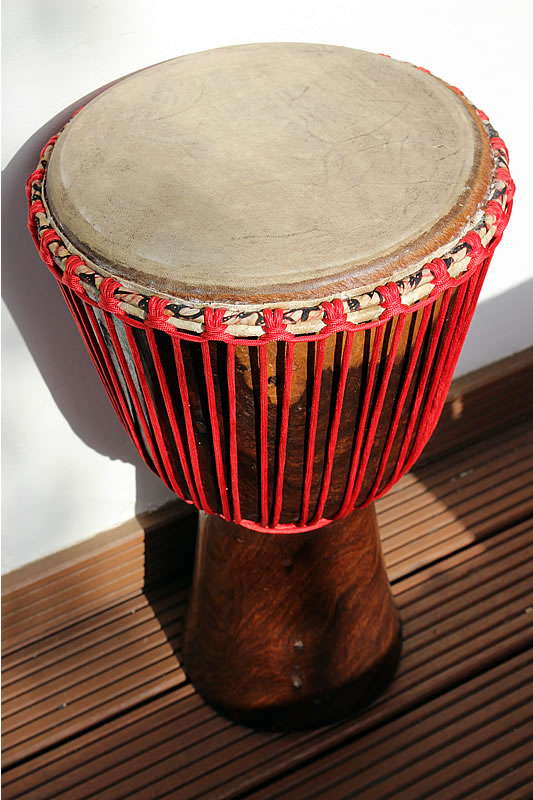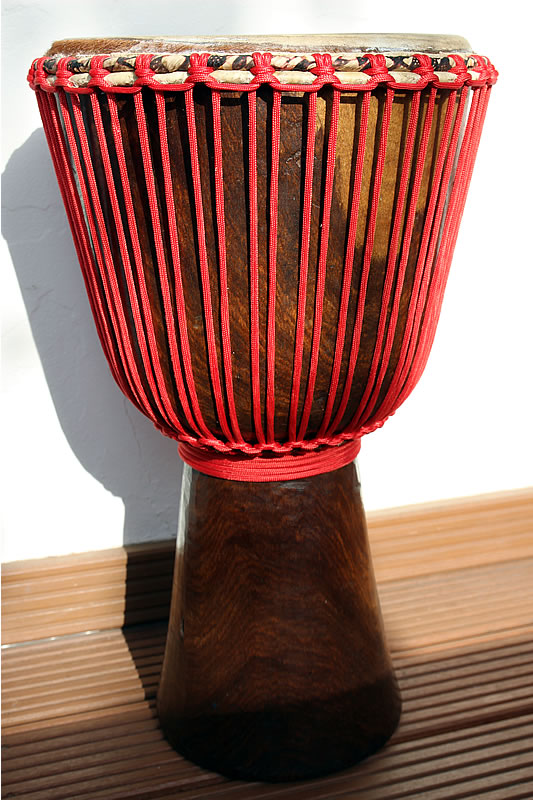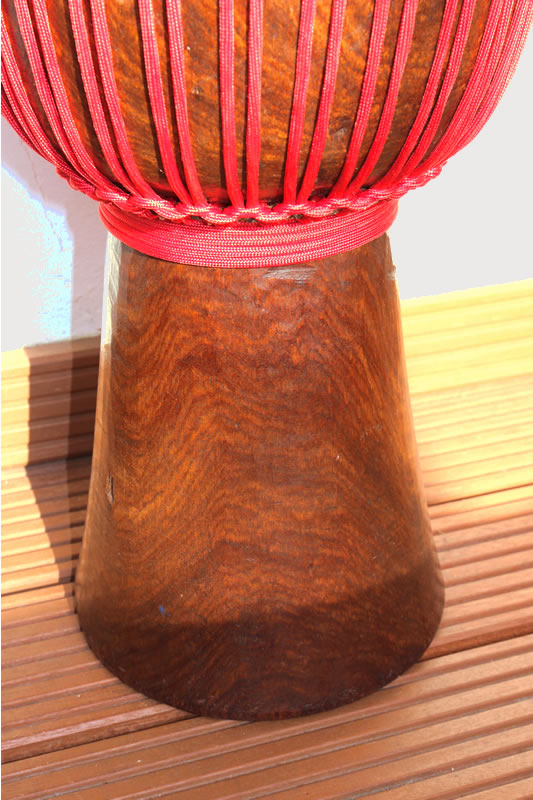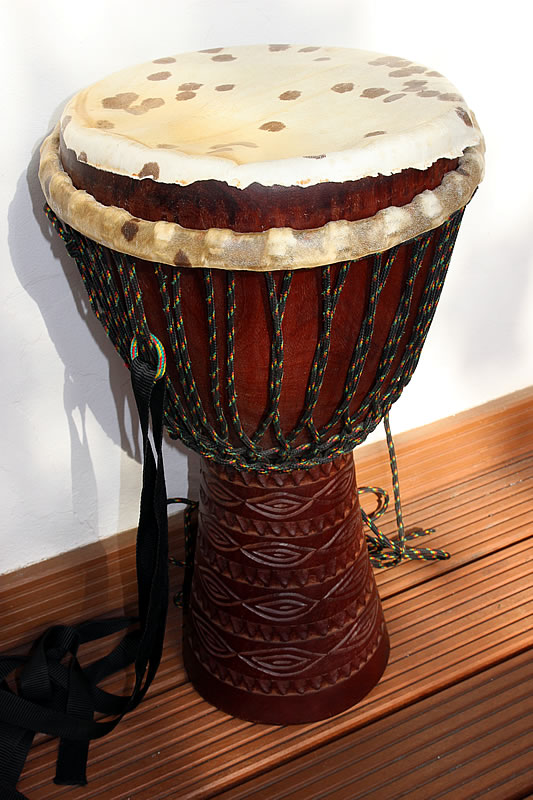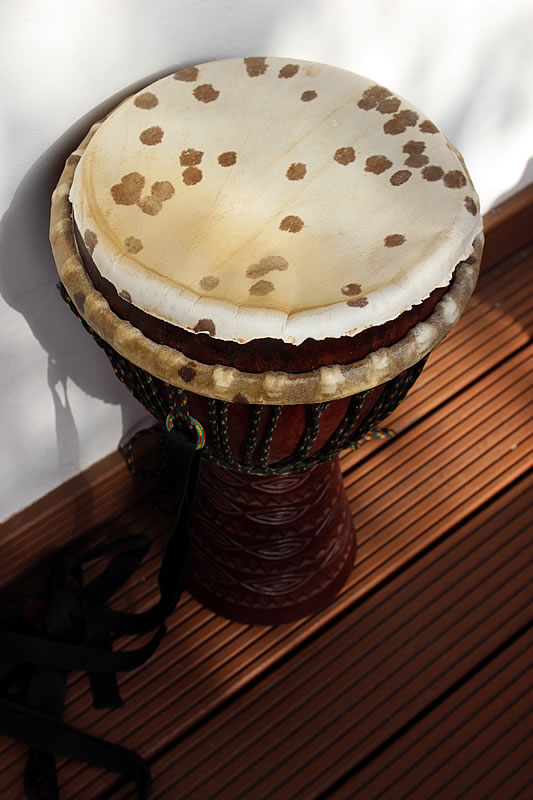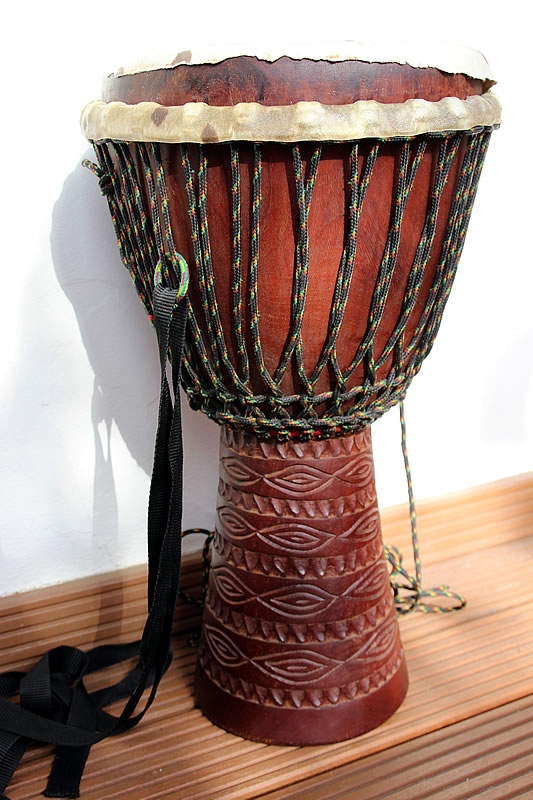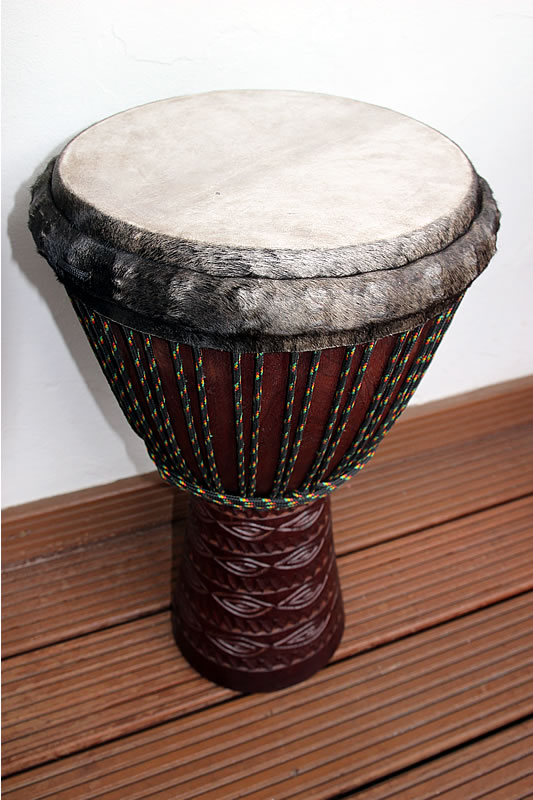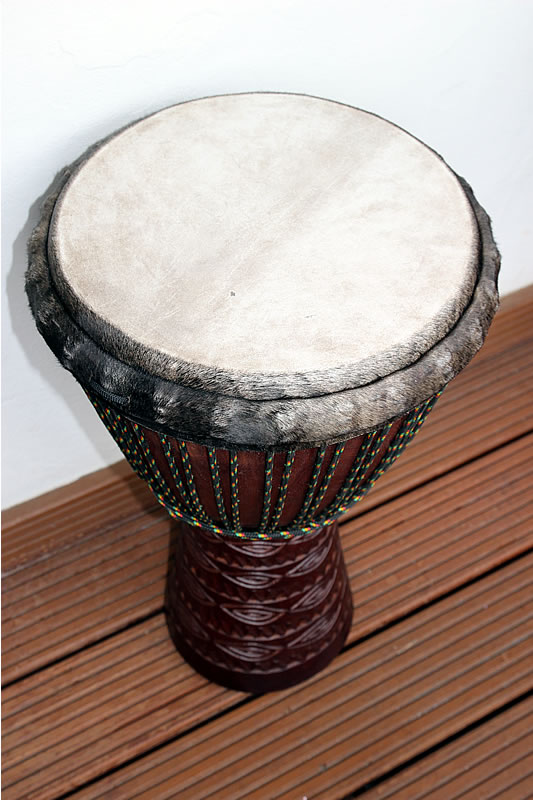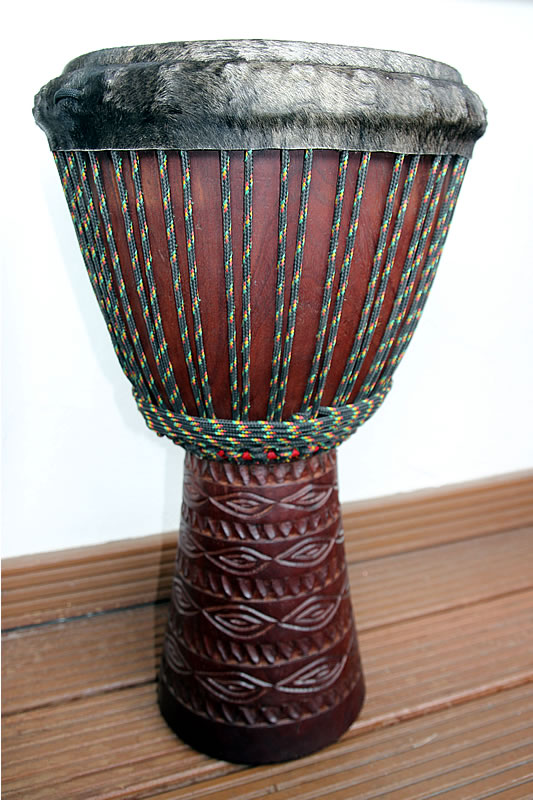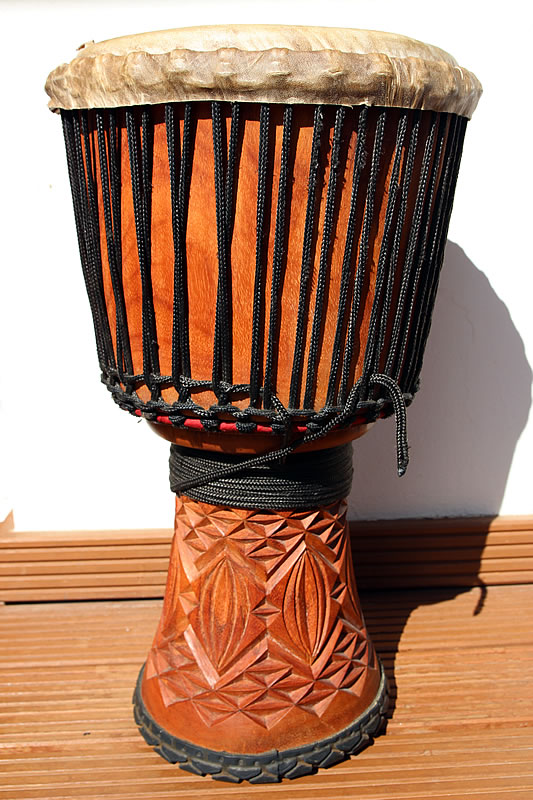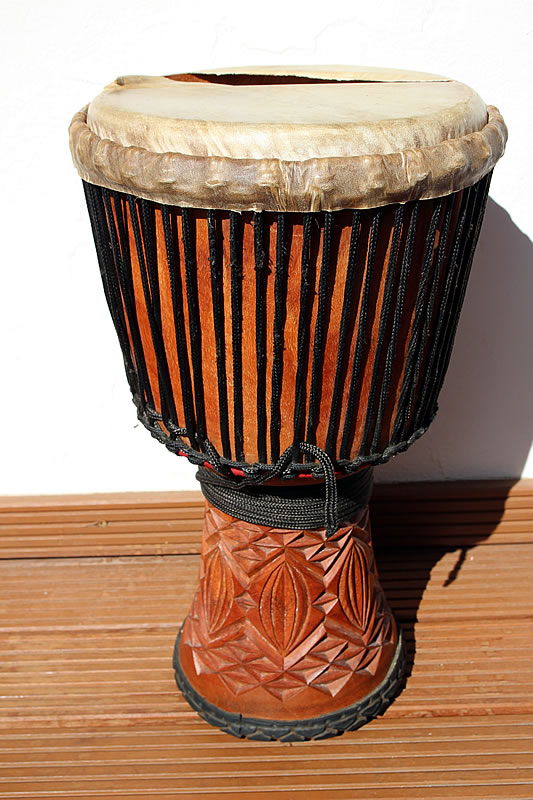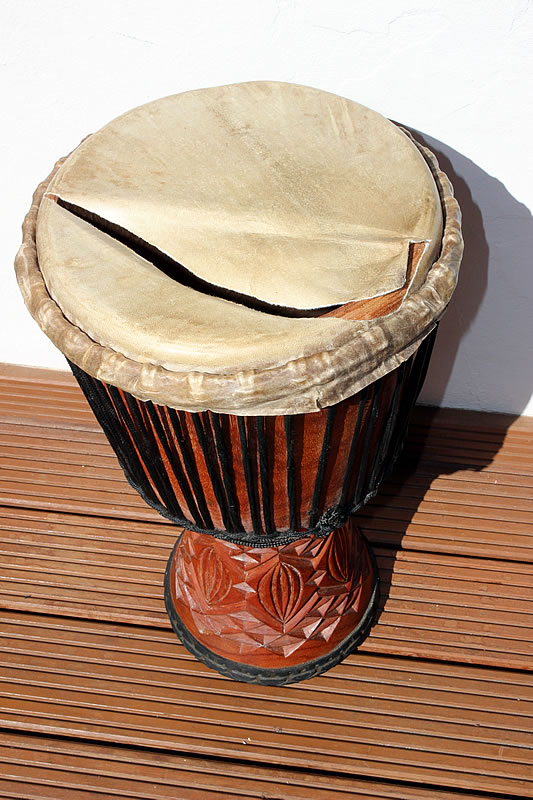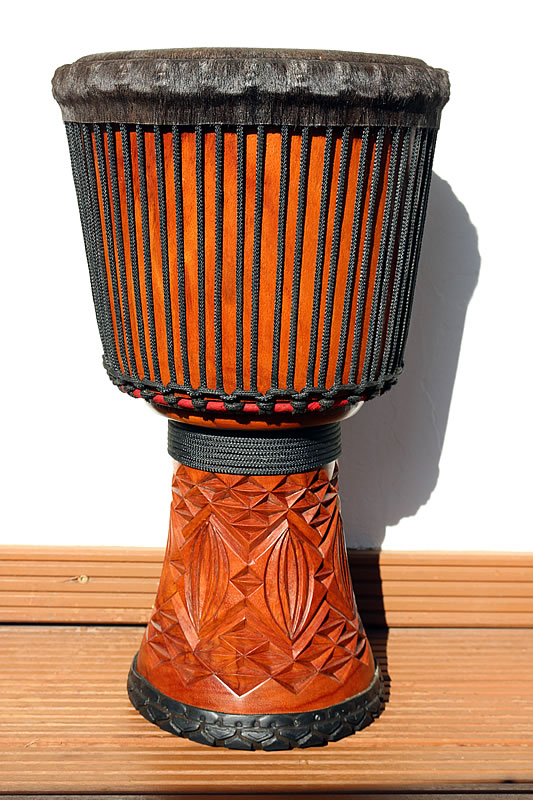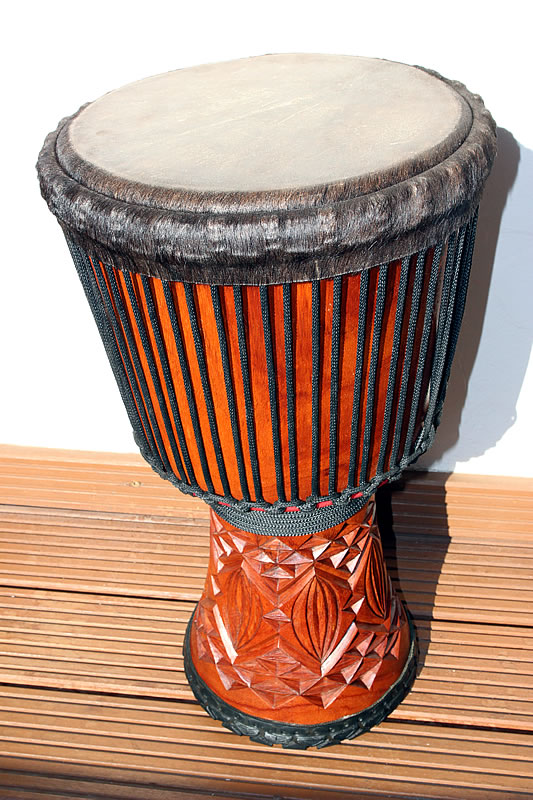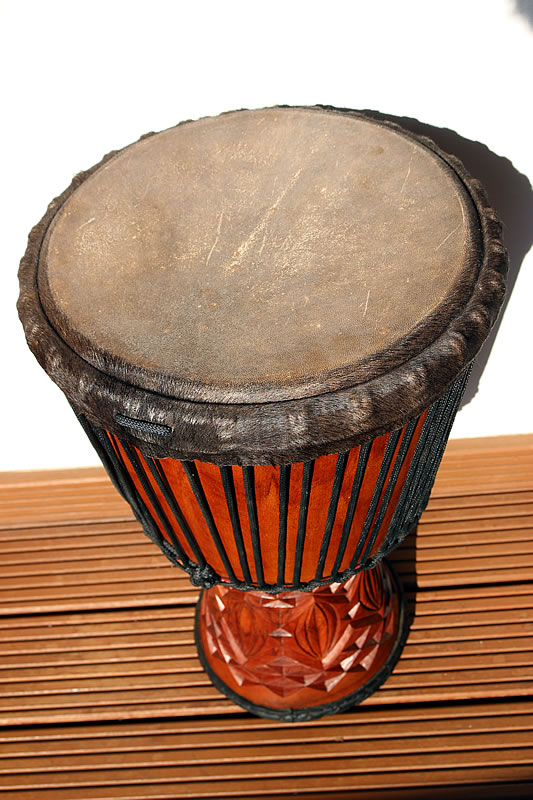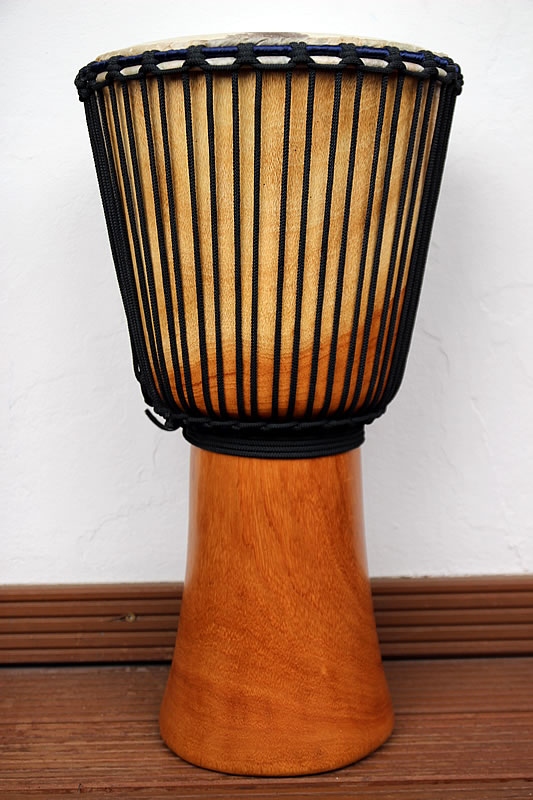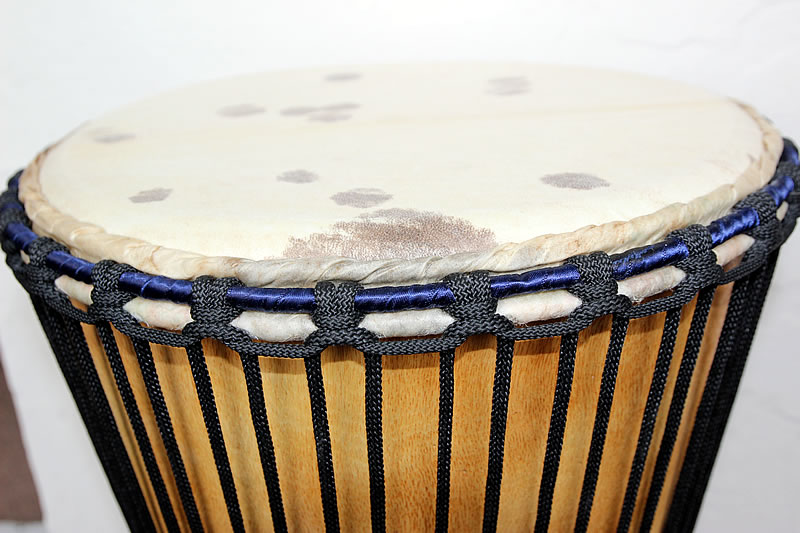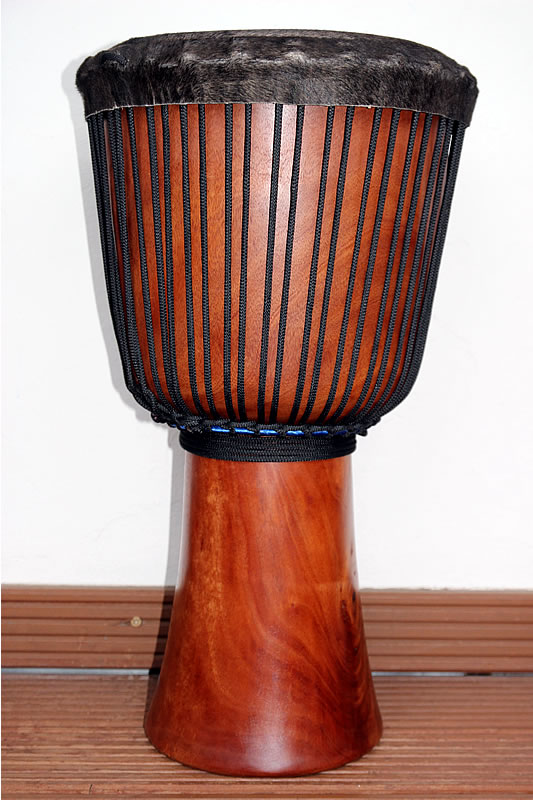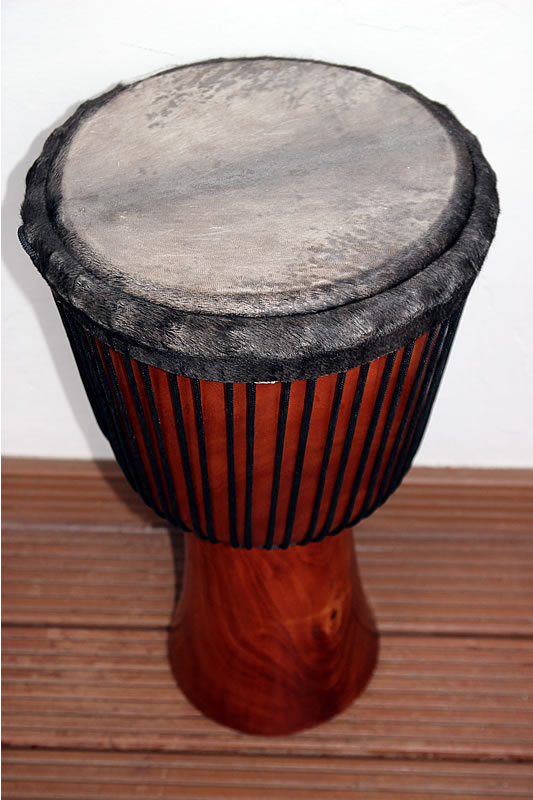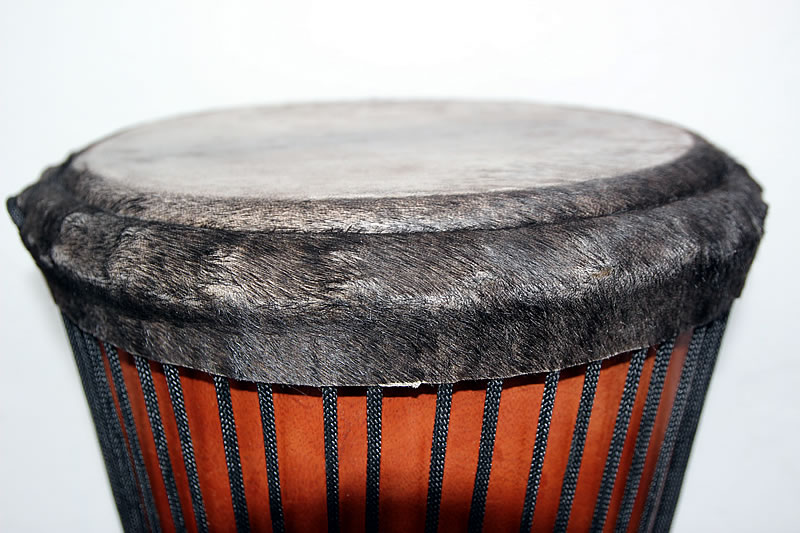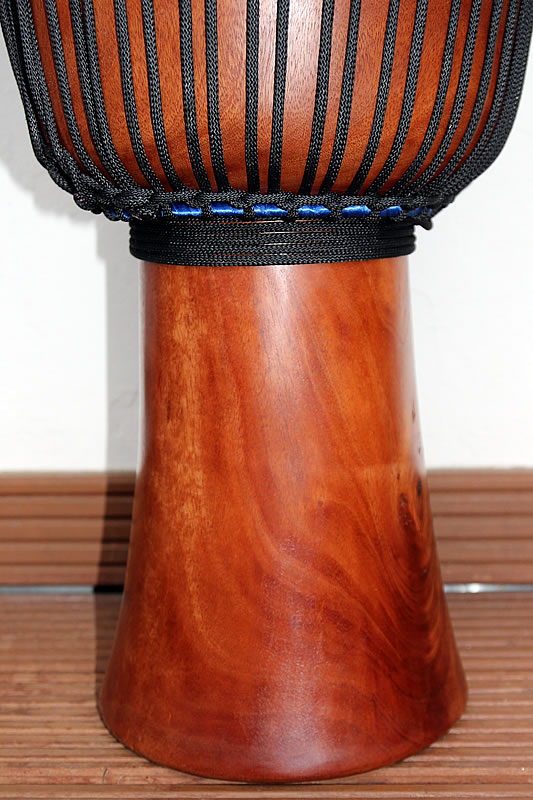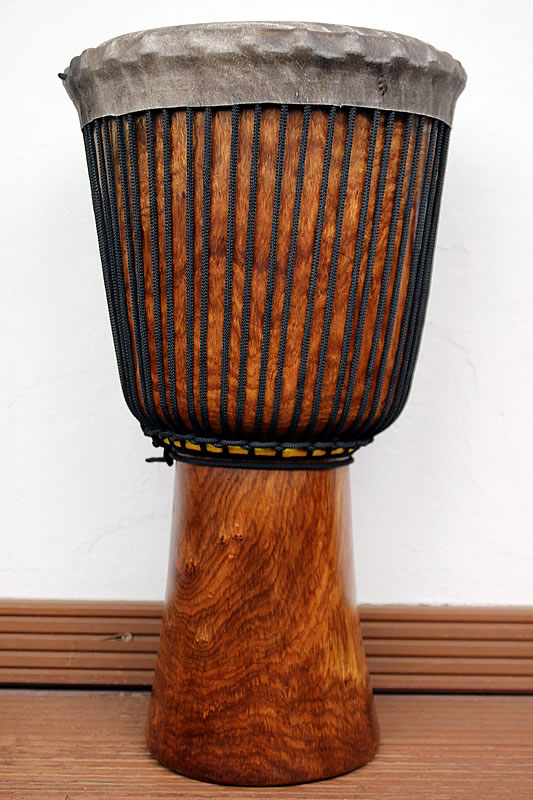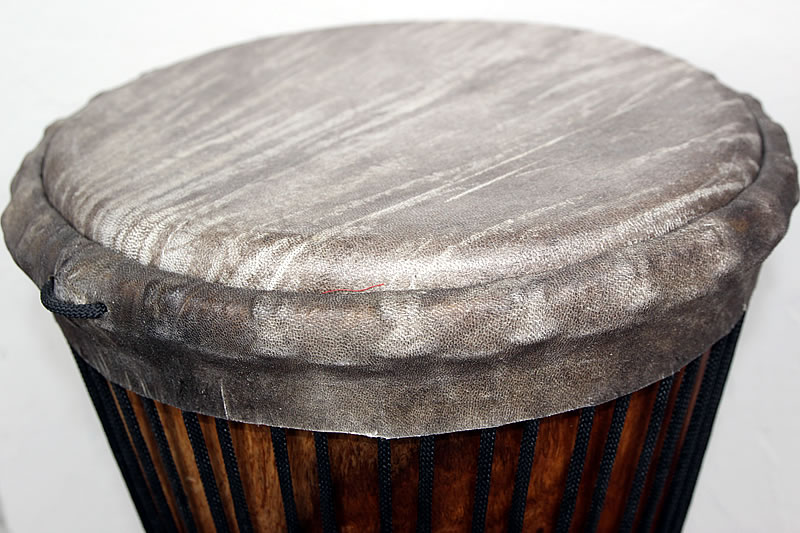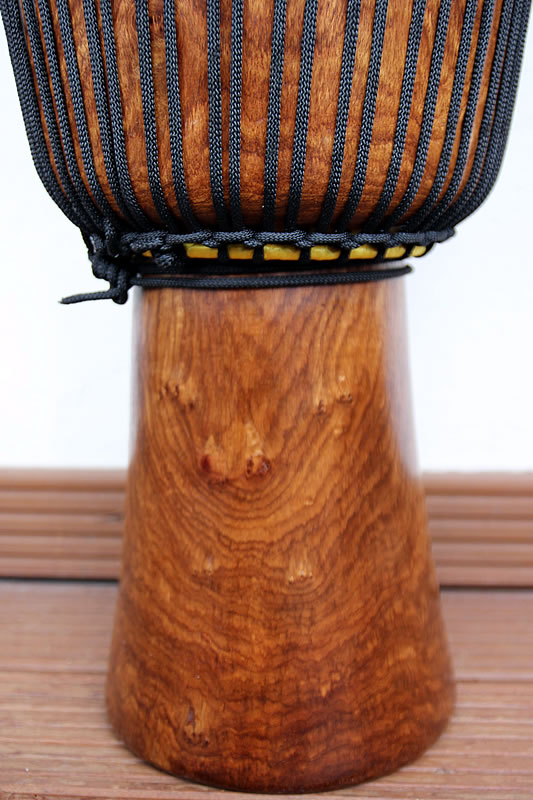Drum repair
Feel free to contact me for any request about drum repairs. My mission is to promote a high possible standard of djembe or dundun repair service by providing clients quality work and attention. Every repair I work on plays to its maximum performance. Special attention is always given to the players and their drum. To repair the drums I use the same materials as goat skin, djembe rope, special oil and wax as is the case with the drums for sale here. So you can be sure that after repair the drum sounds, can be played and looks as if this would come from the Djembeshop.
The price varies depending on what you want to make me do in detail and what not. Oftentimes, however, a kind of overhaul of the drum makes sense, in which the rope and the skin will be completely replaced and the wooden body gets impregnated with special oil and wax.
Some reapairs are listed below:
- add knots to the rope to tight the skin and to get a better sound
- eliminate horizontal knots and (re)tight the verticals
- re-heading skins
- replace old main rope
- replace the loops of flesh ring and bottom ring
- bending fitting iron rings for djembe and dundun
- fixing of any crack, whole or whatever of the drum shell
- even top and bottom of djembes
- prepare a smooth bearing edge
- sanding and polishing of shells
- impregnation of drum shells with special oil to get a longterm protection of the wood
- additional rubber bottom to protect your shell
Examples - drum repair
1. broken djembe steem - acajou / djala djembe - client only wants to get a fixed steem
before
afterwards
2. broken skin - traditional dugura djembe from Senegal - customer dont want any sanding of the surface
before
- broken skin
- very thin rope
- not well done loops on the iron rings
- iron rings are to huge
- maaaany many cracks inside the shell
afterwards
- glueing of all cracks
- put feet of the djembe into one level
- threatment of the inner shell with Karité
- scale the rings to the right size und wrapping it with cotton
- preparing new loops
- new rope
- new skin, rolling it at it's border against slightning
- tighten of the skin and sanding it
3. Re-built of a Khadi djembe from Guinée
before
- continuously stretching skin
- poor rope
- not well done loops on the iron rings
- iron rings are to huge
- shell with different cracks
- lacquered shell
afterwards
- glueing of all cracks
- sanding of the shell
- oiling of the shell
- treatment of the inner shell with Karité
- scale the rings to the right size and wrapping it with cotton
- preparing new loops
- new rope
- new skin
- tighten of the skin and sanding it
4. broken skin, djembe made of balafon wood from Mali
before
- broken skin
afterwards
- new skin
- tighten of the skin and sanding it
5. broken skin, lenke djembe from Guinée
before
- broken skin
- dull surface
afterwards
- oiling of the shell and polishing
- treatment of the inner shell with Karité
- new skin
- tighten of the skin and sanding it
6. worse sounding Kambala djembe (iroko)
before
- old skin
- iron rings doesn't fit the shell
- stretching rope
afterwards
- scale the rings to the right size of the shell
- new rope
- new loops
- new skin
- tighten of the skin and sanding it
7. broken skin, djembe from Conakry
before
- broken skin
afterwards
- new, thick, shaved goat skin from Guinea
- tighten of the skin
8. Djembe Ivory Coast (iroko)
before
- broken skin
- bad rope
- not well done loops on the iron rings, not enough knots
- iron rings are to huge
- shell with different cracks
afterwards
- glueing of cracks
- rounding the edge of the top of the bowl
- treatment of the inner shell with Karité
- scale the rings to the right size
- polishing of the outer shell
- preparing new loops
- new rope
- new skin
- tighten of the skin and sanding it
9. Solo djembe (gbeng) with horse skin - out of a workshop in Conakry with Famoudou Konaté
before
- slipped trough horse skin
- bad rope
- less knots / loops
- cracks and wholes inside the shell
- stump surface of the shell
afterwards
- glueing of cracks, closing of wholes
- treatment of the inner shell with Karité
- polishing of the outer shell
- preparing new loops
- new rope
- old horse skin "saved"
10. broken skin, Mali djembe (gele)
before
- broken goat skin
afterwards
- new goat skin
- tighten of the skin and sanding it
10. broken skin - Lingue djembe Guinea
before
- broken skin
- poor main rope
- not well treated shell
afterwards
- processed and polished surface
- treatment of the inner shell with Karité
- new main rope
- new goat skin
- tight and sanded skin
11. Three custom made drums from Guinea for a client - Lenke, Gbeng, Acajou
before
- basic shells from Guinée made of Lenke, Gbeng and Acajou
after
- leveling of the top and bottom of the shells
- fixing of all cracks
- covering of missing wood parts inside the surface
- modeling of missing edges
- sanding of the surface in different steps
- shaping of the bearing edge
- preparing fitting iron rings
- preparing the inside and outside with oil
- polishing of the exterior
- wrapping of the rings
- putting loops on the flesh and bottom ring
- putting the main rope on the drum and the skin
- pulling and sanding of the skin
drum repair - drum building - "final" result (sound) of a lenke, djalla and balafon wood djembe with different skin finish (twisted and flap over)
please click
drum repair - drum building - sound sample a a new mounted cow skin on a balafon wood djembe from Guinea
please click

